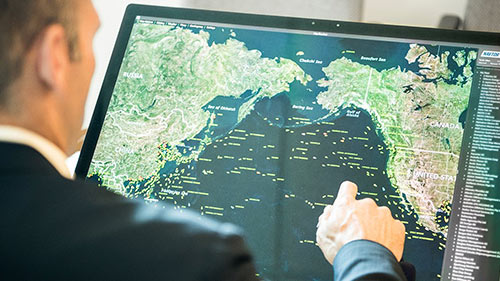Faced with stringent International Maritime Organization (IMO) decarbonisation targets and looming industry regulations, not to mention initiatives such as the Poseidon Principles and the Annual Efficiency Rating (AER), the pressure is on for shipowners, ship managers and operators to understand and improve the performance of their vessels.
“Effectively managing the performance of your fleet delivers the ability to reduce fuel consumption, decrease OPEX, cut emissions, meet environmental and charter party goals, and comply with regulations,” comments Jacob Clausen.
Charting success
Clausen is vice president, operations, at Norway-headquartered NAVTOR. Until recently, the company was best recognised as a leading force in the provision of innovative e-Navigation solutions and navigational products and services for the maritime sector. NAVTOR’s Pay As You Sail (PAYS) ENC service and e-Navigation solutions, NavTracker, NavBox and NavStation, have helped the firm establish a worldwide network of subsidiaries and distributors since opening its doors in Egersund in 2011.
However, last year the company announced a bold move into the realm of fleet management and performance optimisation with the launch of its total ship operations platform, NavFleet. Hot on the heels of that announcement was the acquisition of US-based vessel analytics and performance specialist Tres Solutions and its core software and services platform, Tres Vessel Analytics.
“Our slogan had always been ‘e-Navigation made easy’, and we had always been known as an e-Navigation company,” says Børge Hetland, NAVTOR CCO. “But NavFleet and the acquisition of Tres have taken us into a new business area.”
Performance optimisation
Developed over two years in collaboration with key shipowners, NavFleet offers performance optimisation and decision support based on real-time integrated data from vessels, fleets, offices and other sources already present within the NAVTOR product ecosystem. Using the company’s cyber-secure certified gateway, NavBox, and cloud computing resources, remote teams are able to access data relating to, for example, vessel sensors, weather, passage planning, route optimisation, engines and fuel consumption.
Performance optimisation is a key NavFleet selling point, with the ability to benchmark, troubleshoot, refine and share best practices across fleets, while solving individual vessel issues. For example, if a shoreside team knew what rpm should produce a speed of 10knots in good weather conditions, vessel engines could be set accordingly and ongoing speed monitored.
If speed doesn’t meet expectations a hull performance issue could be identified, with biofouling producing frictional drag, hampering performance, and impacting on fuel consumption and efficiency. NavFleet can deliver this insight, according to Hetland.
The system also supports automation of key reports, including mandated EU MRV/IMO DCS reports. Other reports, such as noon reports, can be sent directly from vessels using the software and accessed from anywhere through the application.
In addition, NavFleet’s real-time monitoring capabilities help office-based teams determine if vessels are falling short of key performance indicators (KPIs) or deviating from passage plans, facilitating swift remedial action. This ability makes it easier for owners to adhere to the covenants in charter party agreements and potentially avoiding performance claims.
Beyond the horizon
“In shipping today it seems like there’s always something on the horizon, another report or regulation, or a new concern, making navigating the future more unpredictable,” says Clausen, who also heads up NAVTOR’s Denmark operation.
To this end, NavFleet is very much a dynamic product. “It will not have an end state because we listen to the customers and include new functionalities, new features, both based on regulatory demands but also on the customers’ demands,” he says.
With the new Carbon Intensity Indicator (CII) regulation set to enter force on 1 January 2023, NAVTOR has recently equipped NavFleet with CII tools to help customers navigate their decarbonisation journey. The features in the latest release support proactive planning and monitoring compliance with required CII reduction targets mandated by IMO, according to Clausen.
The new tools include: a fleetwide overview of vessels’ CII rating; voyage analysis based on CII rating; simulated emissions and CII rating for a voyage itinerary and speed instructions; and simplified ESG (Environmental, Social and Governance) reporting based on new data extract types.




